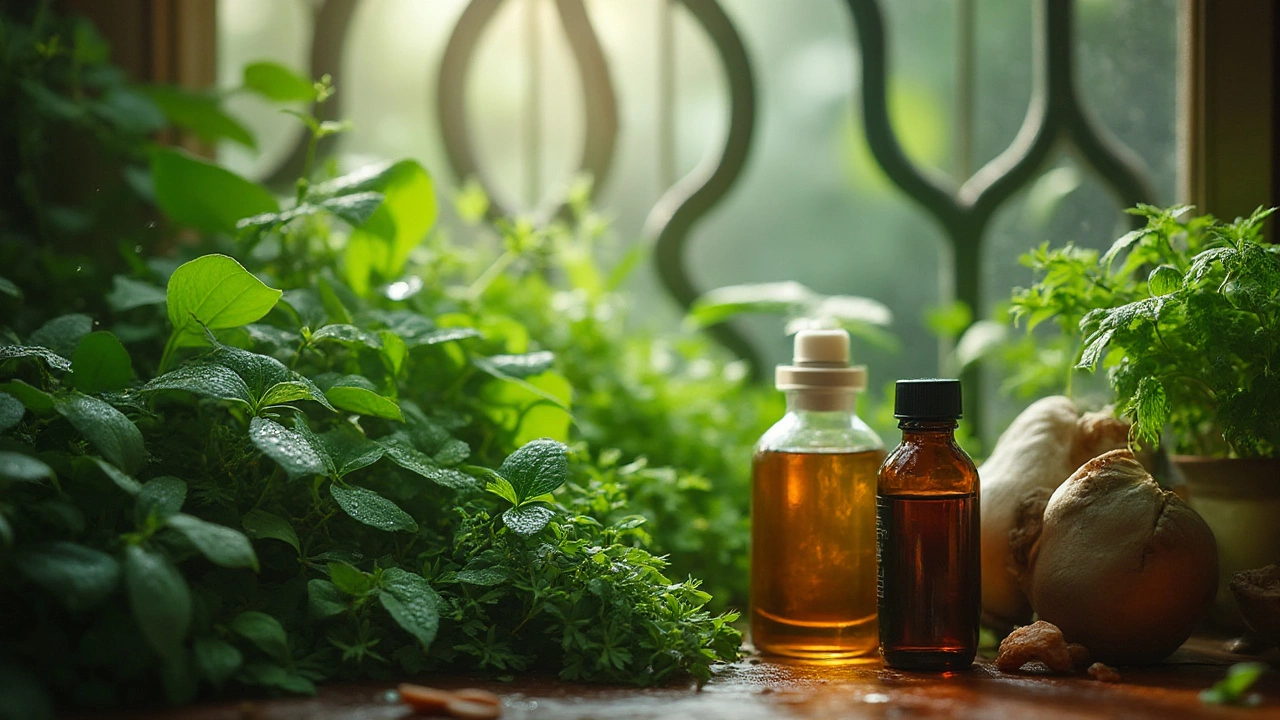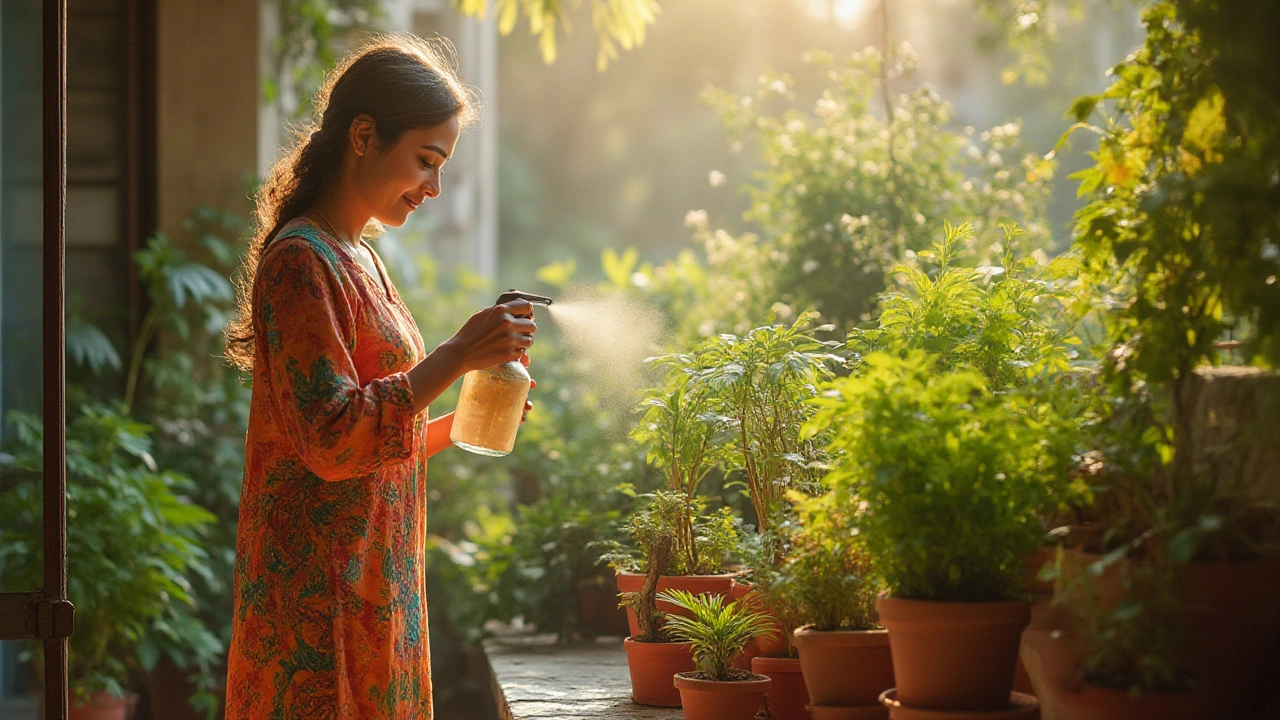Peek behind any Brit’s love for a lush home, and you’ll find a not-so-glamorous routine: getting houseplants ready to come back indoors after a season outside. The sun’s been great, but with it comes an army of bugs—spider mites, aphids, even sneaky soil gnats—that’d love to hitch a ride into your living room. My dog Rufus once spent an evening sneezing because I missed a single spider mite outbreak in the kitchen. So, when the calendar flips toward autumn in Manchester, and wet winds start hinting it’s time, plant lovers everywhere ask: what should you spray on your houseplants before bringing them indoors?
Why Spraying Matters Before Moving Houseplants Inside
When houseplants live outside, they don’t just soak up sun—they gather a whole menagerie, from crawling bugs to puzzling fungal spores. You might not spot them at first, but trust me, after a week under your roof, those pests pop up on windowsills and soil like uninvited guests at a barbecue. British summers are famous for their unpredictability—one week, blazing sun; the next, rain so constant even Rufus refuses a walk. These swings create the perfect breeding ground for hardy outdoor pests. Once inside, without wind or natural predators, they multiply like mad.
It isn’t just a little dirt and cobwebs you’re worried about. Aphids can distort new leaves, mealybugs ooze out sticky honeydew onto everything from books to sofa covers, and fungus gnats—as anyone who’s poured a cuppa only to find a tiny bug doing backstroke in the mug can confirm—are just a straight-up nuisance.
Stats back it up: a study by the Royal Horticultural Society found that over 50% of houseplant owners have discovered new pest problems within two weeks of moving their plants inside for winter. That’s big—especially if your plants are as fussy as your nan about damp socks. Giving every plant a decent inspection and a protective spray before the move dramatically lowers the odds of a chaotic, buggy house come October.
Best Types of Sprays: What Works and What to Avoid
When you’re trawling the aisles or scanning the web for what to spray, the options range from DIY magic to commercial concoctions. You could knock up a soap solution with cupboard basics or splash out on bug sprays promising ‘immediate results’ and ‘zero risk.’ The question is, what actually works—and what won’t leave your house smelling like a chemical spill?
Let’s start with the classics. Houseplant pest control begins with insecticidal soap—a gentle mix of soap and water (think 1–2 teaspoons fragrance-free liquid soap in a litre of water). This disrupts pests’ outer layers, drying them out but never harming the plant. Plus, it’s safe for pets (cheers to that, since Rufus has a habit of sniffing everything). Neem oil is another winner, extracted from the neem tree. It acts as a two-for-one, disrupting bug life cycles and adding a light leaf sheen. Mix 5 mL of pure, cold-pressed neem oil and a few drops of mild soap in a litre of water for an easy spray. Just mind the smell—strong and earthy, like walking through a wet allotment.
For fungal issues, try horticultural oils. Brands like Vitax or Ecofective (readily found at UK garden centres) offer safe, plant-friendly formulas. They coat and suffocate both bugs and spores, but won’t scorch foliage unless you’re daft enough to use them during direct midday sun.
Chemical pesticides are also an option, but fair warning: many household aerosols contain pyrethroids, which can trigger allergies and aren’t great for indoor environments—especially if you’ve got pets or kids. And never use garden pesticides labelled ‘outdoor use only’ on anything you plan to bring inside, unless you fancy a headache or worse.
- Soap Spray: 1–2 tsp mild soap/L water. Good for aphids, spider mites, whitefly.
- Neem Oil Spray: 5 mL neem oil + 1 tsp mild soap/L water. Works for mealybugs, scale, fungus gnats.
- Horticultural Oil: Follow directions on label. Smothers bugs, wipes out powdery mildew.
- Alcohol Solution: 1 part rubbing alcohol to 3 parts water. Dab onto visible pests. Test first—some plants don’t love it.
- Hydrogen Peroxide: 3% solution, watered into soil to kill fungus gnat larvae.

How to Spray Houseplants: Step-by-Step for Success
If you blitz your plants all at once, you’ll probably miss hidden pests or end up with soggy soil and limp leaves. There’s a knack to spraying houseplants that’s more than just ‘point and squirt.’ Here’s a rundown that won’t leave you cleaning mist off every window for weeks.
First, pick your day. Spray in the evening or on a cloudy day so sun won’t scorch the plant after treatment. Then pick a sheltered spot outside—path, balcony, anywhere Rufus can’t photobomb. Lay down newspaper if you’re worried about mess.
- Inspect plants closely: Turn over leaves, check stems and joints, peek at the soil. Use a white cloth to wipe leaves—if you see bugs, start there.
- Clean off visible pests: Use a damp cloth or a tiny paintbrush dipped in alcohol (the rubbing kind, not your pint).
- Mix your spray: Fresh batch every time—old mixtures can go off and get funky. Shake it up well.
- Spray evenly: Hold the nozzle about 20cm away and mist all leaf surfaces, both top and bottom. Don’t drench—aim for a morning dew vibe, not a rainstorm.
- Spritz stems and a bit of soil: Spider mites love to hide at the base, and gnats breed in the topsoil.
- Let plants air dry: Leave them outside, shaded, for a couple of hours. If it rains, wait for dry weather and repeat.
- Repeat weekly: Do this for two weeks before bringing them indoors. Most pests hatch in cycles, so you need to catch newborns, too.
- Quarantine inside: Once inside, keep sprayed plants away from others for another ten days. That way, if any stowaways appear, they won’t spread.
Stick with these steps and you’ll dramatically lower your odds of an indoor bug infestation. No method is 100% perfect—nature is stubborn—but it sure beats mopping up sticky honeydew from the floor or seeing new leaves nibbled to lace.
Extra Tips, Facts, and a Handy Cheatsheet Table
Even if you’re new to this, there are a few clever tricks every plant enthusiast in Manchester—or anywhere—swears by. Before bringing your leafy friends indoors, consider re-potting if you spot worms or fat white grubs in the soil (those are usually vine weevil larvae). Use fresh compost, and always sanitize old pots by washing them with soap and hot water. Got small plants? Dunk them upside down gently in a bucket with your spray mixture—it’s a surefire way to coat every nook that a mist sprayer misses.
I’ve had success sprinkling diatomaceous earth (the food-grade type) on top of houseplant soil to keep gnats away. It’s a fine powder that shreds soft-bodied bugs, but won’t harm your pets (Rufus, tested and approved). Still, don’t let it become airborne—humans shouldn’t inhale too much dust, no matter how natural.
Avoid using vinegar or bleach sprays—these can burn leaves, damage roots, and disrupt plant growth even if diluted. Tomato leaf sprays turn up in old gardening forums, but tests have never shown real results. Stick to proven, safe solutions.
Even some UK garden centres now swear by biological controls—tiny predatory mites or microscopic nematodes you can add to soil and leaves to control pests naturally. These can sound a bit sci-fi, but they’re harmless to people and pets, and let’s be honest, way less hassle than chemical foggers.
Here’s a cheatsheet to help you decide what spray matches each pest:
| Pest/Problem | Best Spray | Extra Tips |
|---|---|---|
| Aphids | Insecticidal soap, Neem oil | Spray stems and undersides |
| Spider mites | Neem oil, Horticultural oil | Raise humidity for prevention |
| Mealybugs | Alcohol solution, Neem oil | Dab with cotton swab first |
| Fungus gnats | Hydrogen peroxide (soil), Diatomaceous earth | Let soil surface dry between watering |
| Scale insects | Neem oil, Alcohol solution | Scrape off visible bugs gently |
| Powdery Mildew | Horticultural oil | Increase airflow and reduce damp |
Staying ahead of the pest parade is less about expensive products and more about vigilance, common sense, and a bit of routine maintenance. Spray your houseplants as part of your move-in ritual each autumn. Talk to fellow plant lovers at a local Manchester allotment or Facebook group—someone always has a tip not found online. And if you see Rufus suddenly pawing at a leaf, take a closer look—you might just spot the pest before it becomes a problem.

